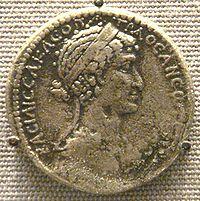Egyptian culture and background were recently acknowledged as a consequence of modern cultural identity that tried to replace the dominant Western views on World history with a greater focus on Africa’s contributions. However, when we think about people of the past, we intuitively try to imagine what they would have looked like in real life, to visualize their physical features and general appearance.
The Western culture regularly portrays ancient Egyptians and in various perspective and ways in which this happened shows how impressions change over time. Take Queen Cleopatra, for example, the last queen to rule the Egyptian descent. The repeated filming of the story of Shakespeare’s Anthony and Cleopatra shows how the image of this great woman has changed.
The 1963 Hollywood blockbuster featured the British-born Caucasian Elizabeth Taylor as the queen; in a 1999 movie a Latin-American actress of mixed Chilean-French parentage, Leonor Varela, played the part of Cleopatra. A calendar issued somewhat earlier by an American beverage company entitled “Great Kings and Queens of Africa” included a depiction of Cleopatra as a black African woman.

These changes in the queen’s representation did not result from scholarly reconsiderations of ancient data, but from changing perceptions in the popular mind about the context of ancient Egypt. From the above-stated points, it will be observed that the portrait of Cleopatra, the last queen of Egypt throughout history is not an accurate one.
The last queen of Egypt, Cleopatra was the daughter of Ptolemy XI and married her younger brother when she was 17 (Anderson 38). Cleopatra was by origin an Egyptian; by lineage and ancestry, she was a Greek (Abbott 4).
Although she was the queen of Egypt, Cleopatra did not possess a drop of Egyptian blood but was more Greek. With the help of Julius Caesar, she led a successful revolt against her brother, to have control of the kingdom, as a vassal state of Rome.
Cleopatra became Caesar’s mistress and bore him a son. Allied with Marc Anthony after Caesar’s assassination, the pair were defeated by Octavius (later Augustus) at the battle of Actium in 31 B.C. After their defeat, the lovers took their own lives, and the legend of Cleopatra as the archetypal temptress and romantic heroine has exerted a powerful influence in Western art ever since.
Cleopatra was a talented ambassador, commander-in-chief, superintendent, and a writer, who skillfully managed her kingdom in the face of a deteriorating political situation and increasing Roman involvement (Burstein 10).
Like all other women, she experienced male-governance in both prehistoric and modern eras and was repeatedly considered as an influence to the men she came across or was classified as a typical patriotic female character, whose main success was to destroy the men that she came in contact with. In line with this, she is believed to be an outstanding person in Greco-Roman history.
Cleopatra was the only female ruler in prehistoric times to customarily govern autonomously- not simply as an heir to her late husband- but to a great extent; she attempted to rescue and save a dying kingdom from collapsing in the face of irresistible Roman force. As a result of this, she was regarded as the reincarnation of the goddess Isis (Stanley 20).
Looking back at her lineage, she had more influence and power than the Romans who were in opposition or rivalry with her. As a lady, her dynastic existence needs individual verdicts which are superfluous to her male counterpart.
Works Cited
Abbott, Jacob. Cleopatra, Teddington, Middlesex: Echo Library, 2006. Print.
Anderson, Jaynie. Tiepolo’s Cleopatra, AU: Macmillan Education, 2003. Print.
Burstein, Stanley. The reign of Cleopatra, Westport, CT: Greenwood Press, 2004. Print.
Cleopatra. The History Channel website. n.d. Web.
Stanley, Mayer. The Reign of Cleopatra, Oklahoma: University of Oklahoma Press, 2007. Print.